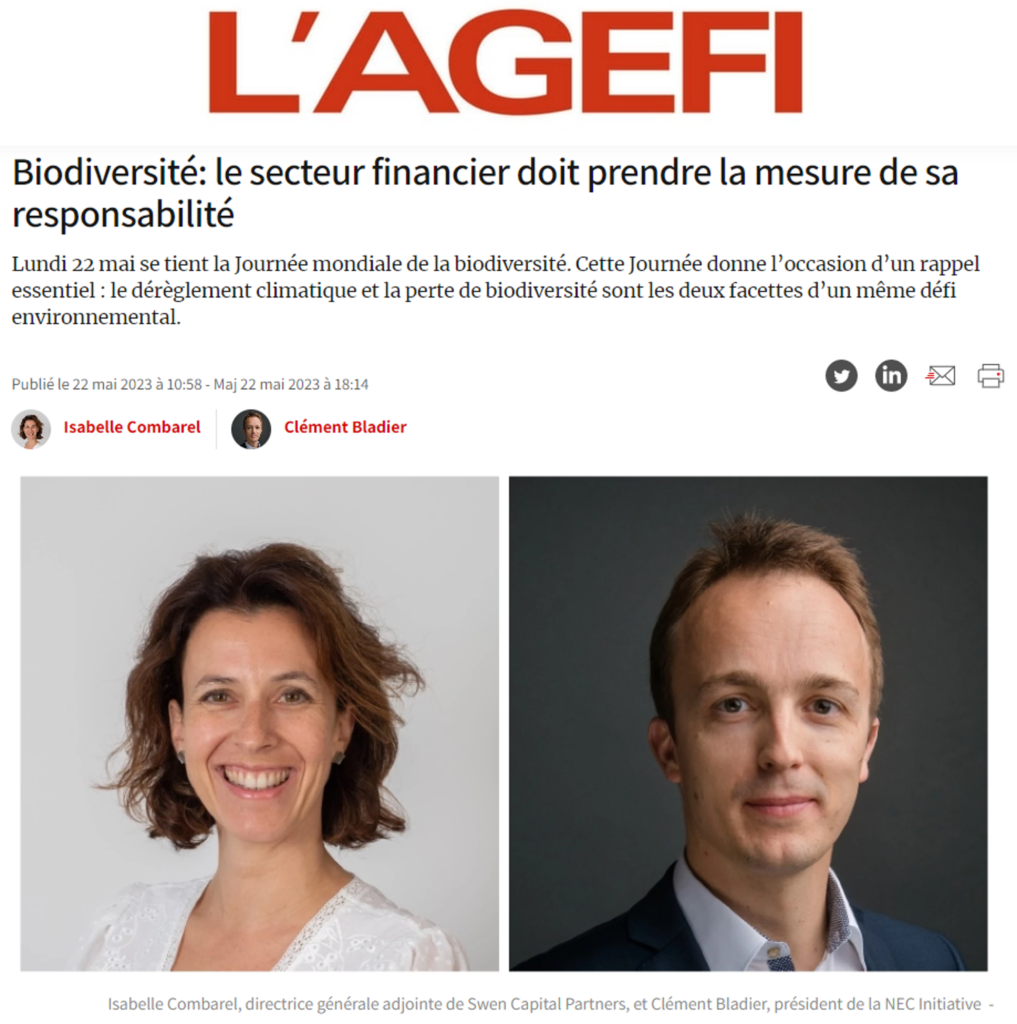The financial sector urgently needs to take stock of this reality and adapt its investment strategies with regard to biodiversity.
According to the French Office for Biodiversity, biodiversity “refers to all living beings and the ecosystems in which they live. The term also includes the interactions of species with each other and with their environment”. Biodiversity is the source of all the resources we use to live: oxygen, drinking water, food and raw materials. With 55% of the world’s GDP dependent on the services provided by biodiversity (source: Swiss Re, 2020).
Today, however, the scientific evidence is clear: biodiversity is in serious danger. According to the latest report from the Intergovernmental Science-Policy Platform on Biodiversity and Ecosystem Services (IPBES), we are currently experiencing the sixth “mass extinction of species” (the fifth, 66 million years ago, was the extinction of the dinosaurs…). Of the nine recognised planetary limits, biodiversity is the one that has been exceeded the most.
Climate and biodiversity are interconnected
Focused on the climate issue, the financial sector has not taken the measure of this environmental challenge. Climate change has been identified by IPBES scientists as one of the major causes of biodiversity loss. On the whole, what is good for biodiversity is good for the climate, but the reverse is sometimes not true. Take the example of renewable energies in the energy and transport sector (wind power, solar power stations, hydroelectricity, electric batteries, etc.). Seen from a “climate” perspective, they are a beneficial alternative, with lower greenhouse gas emissions. However, their impact on biodiversity should not be overlooked: they depend on the extraction of minerals from the earth and the oceans, there are no end-of-life or reuse solutions, they disrupt natural habitats or the migration of certain species, etc. In short, it is a mistake to ignore the impact on biodiversity.
The financial industry must (re)act urgently
COP15 Biodiversity took a major step forward by creating a common framework for the preservation of biodiversity, comprising 23 objectives. For example, one of the key targets to be achieved by 2030 is to conserve and manage at least 30% of terrestrial, inland water and coastal areas. Admittedly, there are no constraints attached to this commitment, but it represents a major step forward on an international scale.
But today, biodiversity is not sufficiently taken into account by financial players in their investment processes. According to Swen Capital Partners’ annual ESG (environment, social, governance) survey of the private equity and infrastructure sector, only 16% of the management companies questioned said they had a biodiversity strategy, compared with 64% for a climate strategy.
Because investors are on the front line of financing the economy, it is vital that they take the measure of their responsibilities in the face of the environmental challenge as a whole, by adopting a more holistic approach: biodiversity and climate. Robust and transparent scientific tools exist to help them do this. The environmental challenge compels us to act: a wait-and-see attitude is no longer an option.

